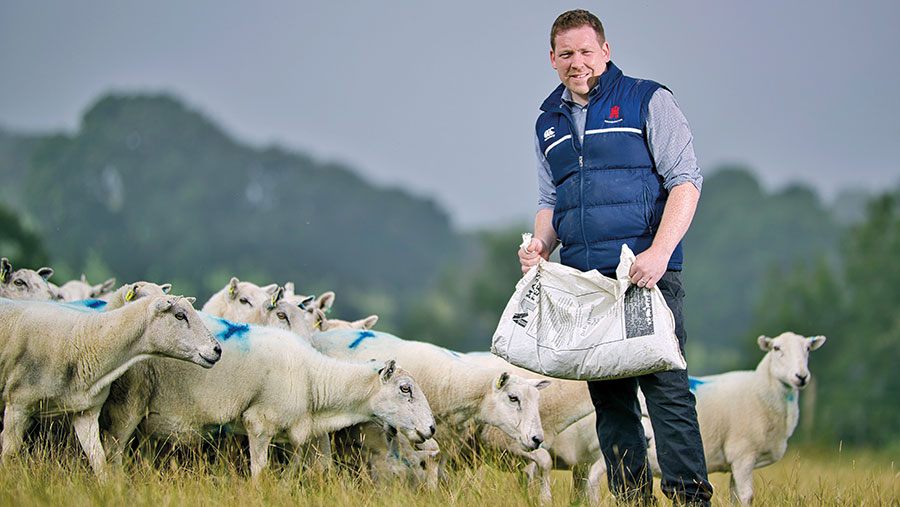Farmer Focus: Hoping grass comes after £75/t lift in feed price
 Joe Mault © Richard Stanton
Joe Mault © Richard Stanton Lambing has finally finished, and it has been successful. With the good weather and tolerable sheep, there are plenty of small lambs running about the place – even if we’d always like one or two more than we have.
The outdoor flocks have benefited from the fine weather, but by early May we were pushing our grass levels owing to the lack of rain.
It’s a difficult balance, wanting nice weather for lambing, and at the same time getting enough rain to allow grass to take off once it warms up.
See also: How sheep farmers can protect spring grass covers
With grass in short supply, we were still supplementary-feeding concentrates to some ewes at the start of May. This was a very expensive ploy, with prices having increased by £75/t between the start of lambing and the end.
Variable costs like this are unsustainable for most farms. I predict less dependence on concentrates across the industry long-term, and more use of drought-tolerant grass species.
The more diverse a grass ley is, the more chance of it becoming resilient to most weather conditions.
Although this might seem like common sense, some label this as part of “regenerative farming”.
Regen ag, as it’s known by some, interests me.
Although I may have been quite negative in my recent columns about UK/Welsh government policy, input prices and the weather, I am excited about what the agricultural industry will look like in the next five to 10 years, including regenerative agriculture.
Never has there been so much scrutiny of our industry, and I see this as a good thing. How often have we said the public doesn’t understand where their food comes from?
And now, when they take interest, I see an opportunity to educate them about the real solutions that farming has to offer for food shortages, climate change and declining biodiversity.
We should be talking about herbal leys, genetic improvements, electric tractors, how many miles of hedges we have planted in the past 10 years, and of course the supply of safe, traceable and tasty food.
We need to fight back against the propaganda of the anti-farming brigade, but we need to make sure we do it respectfully and with facts.
Lowering our industry to their level will only feed the squabbling and negativity – and not feed the nation.

